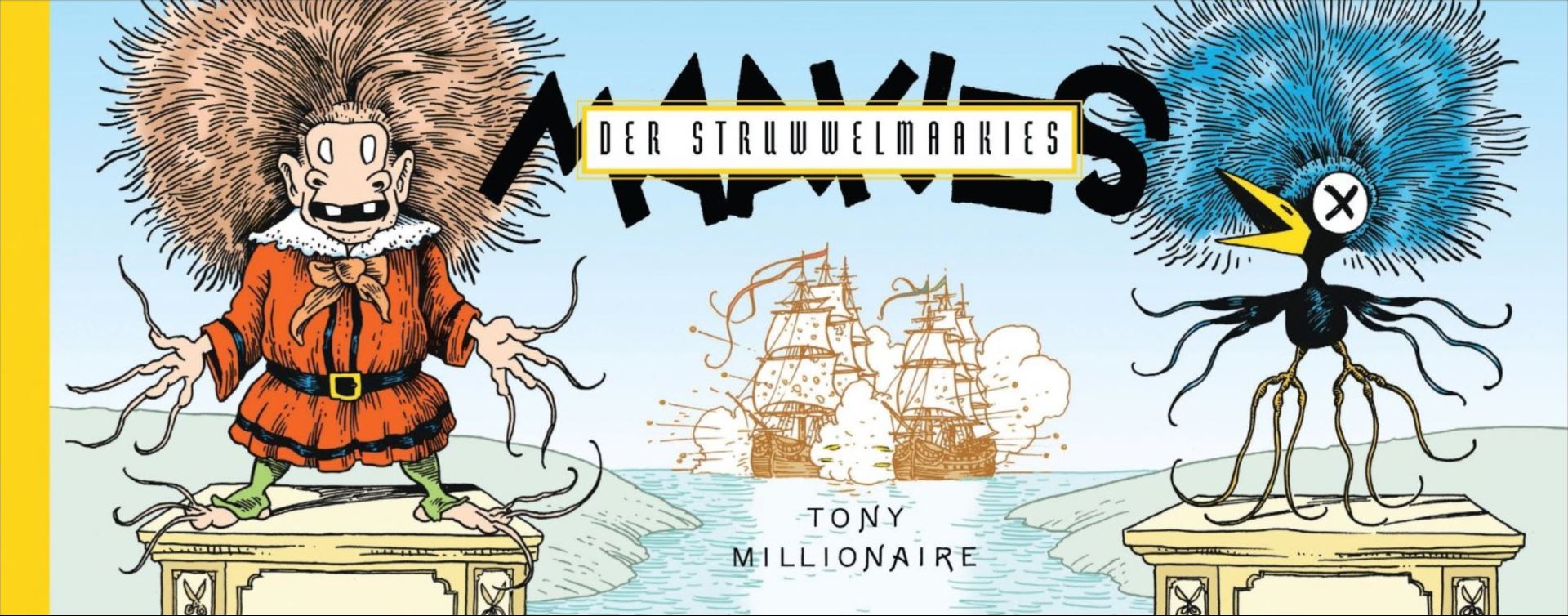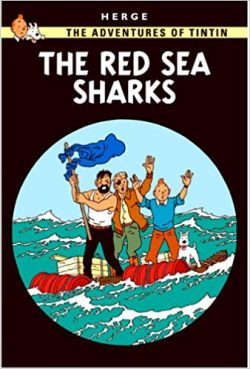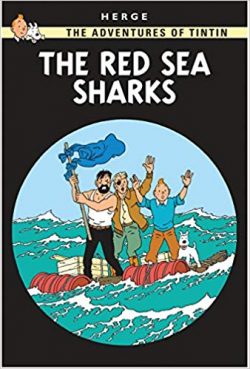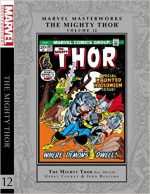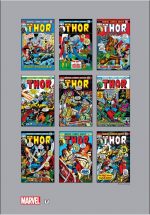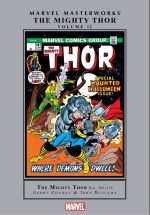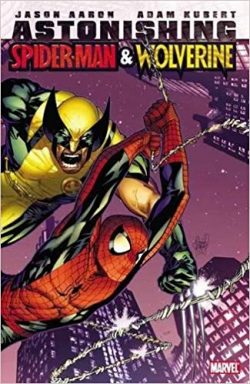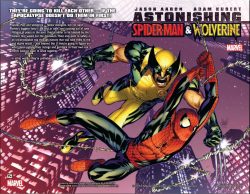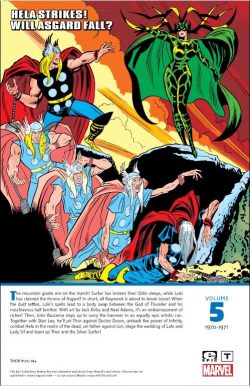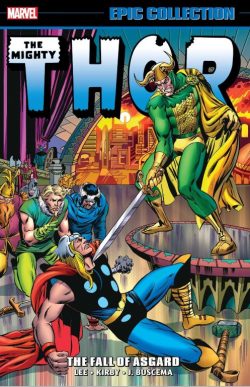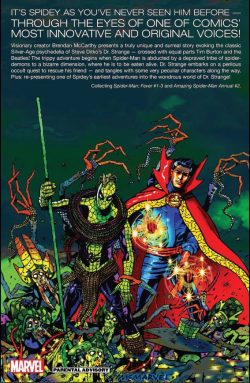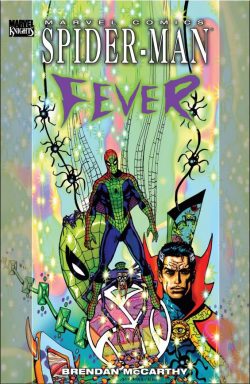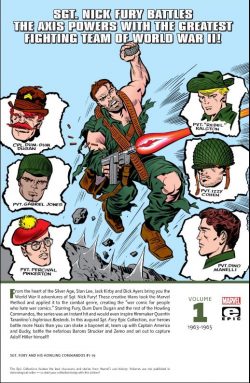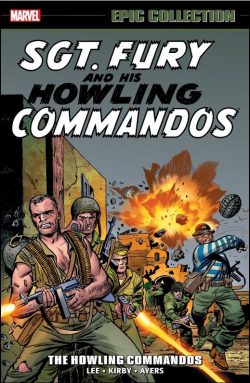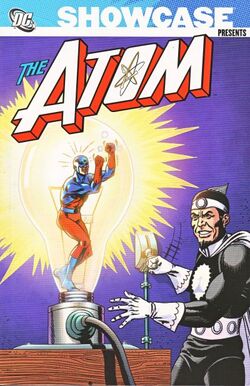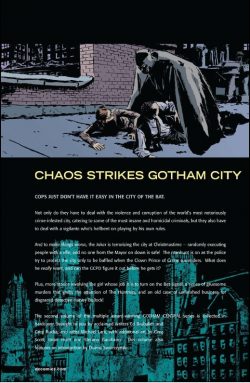
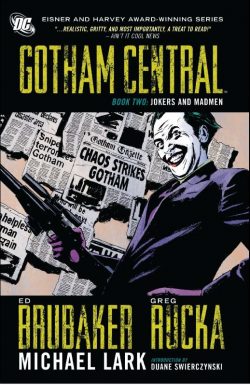
By Ed Brubaker, Greg Rucka, Michael Lark, Greg Scott, Brian Hurtt, Stephen Gaudiano & various (DC Comics)
ISBN: 978-1-4012-2543-8 (TPB)
There are two names horrifically synonymous with Gotham City, USA.
If you’re a cop, you keep your own opinions about the Batman, and it’s pretty much unanimous that the Joker is not someone you ever want to deal with. A madman with a homicidal flair for the theatrical, the clown loves a special occasion. It’s Christmas and it’s started to snow…
One of the greatest rewards of long-lasting, legendary comicbook characters is their infinite potential for innovation and reinterpretation. There always seems to be another facet or aspect to develop. Such is the case in regard to the much-missed spinoff series Gotham Central, wherein cop show sensibilities cannily combined with the deadly drudgery of the long-suffering boys in blue patrolling the world’s most famous four-colour city.
Owing as much to shows like The Rookie, Law & Order, The Shield or Blue Bloods as it did to the baroque continuity of the Dark Knight, the mesmerising tales of the bleakly understated series combined gritty, authentic police action with furtive, soft-underbelly glimpses at what merely mortal peacekeepers have to put up with in a world of psychotic vaudevillians, flying aliens and scumbag hairballs who just won’t stay dead.
This second huge paperback volume (also available in digital formats), collects more urban-level exploits of the hard-pressed peacekeepers of the most dangerous city in America – as first seen in Gotham Central #11-22 and spanning November 2003 to October 2004.
The patrol begins with moodily effulgent introduction ‘Noir Town’ courtesy of crime author Duane Swiercznski and a handy double-page feature re-introducing the hardworking stiffs of First Shift, Second Shift and the Police Support team comprising the ‘Gotham City Police Department, Major Crimes Unit’ before the dark dramas resume…
First up is uncharacteristic tearjerker ‘Daydreams and Believers’ by Ed Brubaker, Brian Hurtt and colourist Lee Loughridge which explores the GCPD’s strange relationship with the masked manhunter who unwelcomely assists their efforts.
They all know he’s out there, but the official line is that he’s an urban myth and the Administration refuses to acknowledge his existence. Thus, civilian receptionist Stacy is the only person allowed to operate the rooftop bat-signal whenever crises occur, whilst the public are informed that the eerie light is simply used to keep the cowardly, stupid, superstitious underworld cowed…
Here, however, we get a glimpse into the shy lamplighter’s inner thoughts as she observes the fractious byplay of the MCU regulars: all getting by thinking they’re fooling everyone else with their jealous bitching, petty sniping and tawdry clandestine affairs.
It’s all okay, though. Stacy has her own world to retreat into: one where the mighty Batman is her enigmatic but passionate lover…
The main event opens with a Yuletide shopping panic that looks to be the most memorable ever. Crafted by Brubaker, Greg Rucka, Michael Lark & Stephen Gaudiano, ‘Soft Targets’ finds the entire Major Crimes Unit frantically hunting a sniper randomly shooting citizens. Things get even nastier and more fraught after Mayor Dickerson is killed as he consults with new Police Commissioner Michael Akins.
The ruthless shooter guns down a school teacher and the medical examiner collecting her body and soon the pre-Christmas streets are deserted. The assassin then identifies himself by launching a website promoting “Batman for Mayor†and the appalled police realise just who they’re dealing with…
As Stacy turns on the roof signal her greatest wish comes true at last as the Gotham Guardian sweeps her off her feet… microseconds before a fusillade of shots nearly makes her the latest statistic…
As the Dark Knight vanishes into the snowy darkness after the maniac, Gotham’s Finest get back to their meticulous police work, tracking ballistics and hunting for the website’s point of origin. Mounting media frenzy and their own frustration lead to crippling tension and soon they’re all at each other’s throats, before a potentially nasty situation is immediately curtailed by a new posting…
A live web-cam feed starts, counting down to a fresh victim somewhere in the huge terrified powder-keg conurbation…
As the cops pull out all the stops to identify the building on-screen and resort to old dependables, such as violently rousting the Harlequin of Hate’s (surviving) former flunkies, the scene suddenly changes. Now it shows prime media pain-in-the-neck Angie Molina as a captive of the killer clown: stashed somewhere anonymous and slowly ticking down to a bloody and show-stopping demise…
And just when things can’t get any crazier, The Joker turns himself in…
Even the insufferably cocky kook’s capture doesn’t halt the slaughter, since the proudly Machiavellian perpetrator can carry on killing by pre-programmed remote control even as he languishes in a cell…
When Lt. Ron Probson elects to go all “old school†in his interview with the loon, it only results in his own death and the clown’s escape. Stacy barely avoids death a second time because Captain Maggie Sawyer saves her questions for later and shoots first – and often…
Working a lead, Detectives Nate Patton and Romy Chandler have meanwhile found the captive reporter and realised the Joker’s convoluted, mass-murderous endgame, but even with Batman on scene they don’t all make it out…
‘Life is Full of Disappointments’ (Brubaker and Rucka with art from Greg Scott) then focuses on disgruntled Second Shift veteran Jackson “Sarge†Davies who is still chafing at once again being passed over for promotion – especially as prissy new Day Shift commander David Cornwell has been parachuted in from outside the unit to run things…
As the squad come back from burying their dead, Sarge and partner Nelson Crowe catch a nasty case: a dead girl in a dumpster. However, Stephanie Becker was no lost indigent or fun-loving party girl killed for the contents of her purse. She worked in accounting at prestigious Washburn Pharmaceuticals and was killed with an exotic toxin…
As the grizzled old-timers methodically work the facts, they connect a succession of odd occurrences which lead them to First Shift colleagues Tommy Burke and Dagmar Procjnow, currently investigating the suspicious death of middle aged widow Maryellen Connolly. She is a still-warm stiff previously employed in the same office and slain the same way…
All the evidence seems to point to an unsanctioned million-dollar deficit and deep Mafia involvement at the Pharma factory, but the diligent detectives keep pushing and discover a far older possible motive for the murders…
This gritty grimoire of Gotham atrocity ends with the bleakly chilling ‘Unresolved’ (Brubaker, Lark & Gaudiano from issues #19-22) which features the reappearance of conflicted fan-favourite and all-around slob Harvey Bullock after the GCPD reopen a landmark cold case.
Marcus Driver and new partner Josie Mac are called to a hostage situation where a deranged perp continually screams about voices in his head before eating his own shotgun…
The troubled stiff was Kenny Booker – sole survivor of an infamous High School bombing which shocked the city eight years previously – and the fresh tragedy compels Driver to take another look at the still-unsolved mystery…
The “Gotham Hawks†were a championship school baseball team eradicated in a locker room explosion, but every effort of Bullock and his squad could never pin down a single solid lead. However, when Marcus and Josie re-examine the accumulated evidence, they find a potential link to one of Batman’s weirdest and creepiest foes.
It’s not enough and they are forced to call in the disgraced ex-cop for a consult. The move is a huge mistake as they are utterly unprepared for the fallout when Bullock talks to them.
Apparently, the legendary maverick was fired after arranging the death of a killer the law couldn’t touch, and he took to drowning his days in booze. However, this case has haunted Harvey for years and now that he sees a possible solution, he goes completely off the rails in his hunger to finish things.
The trouble is that even now the facts tumbling in are increasingly pointing to a completely different culprit from the one Bullock always suspected, but the fixated former lawman just won’t listen…
Going on a rampage, he courts death by brutalising malevolent mobster The Penguin whilst miles away another suspect, galvanised after years of apparent anonymity, breaks out of Arkham Asylum and goes hunting…
Even after all this, the true story is far more twisted than the bewildered detectives could have possibly imagined and the eventual conclusion destroys further lives, sanity and honour before the dust at last settles…
From an era when comicbook noir was enjoying a superb renaissance, these classic thrillers are masterpieces of edgy, fast-paced tension packed with layers of human drama, tension, stress and suspense.
Solid gritty police drama seamlessly blended with the grisly fantasy of the modern superhero seems like a strange brew, but it delivers knockout punches time after time in this captivating series which was the notional inspiration for Gotham TV series outlining just how Batman’s city got that way…
© 2003, 2004, 2009, 2014 DC Comics. All Rights Reserved.

